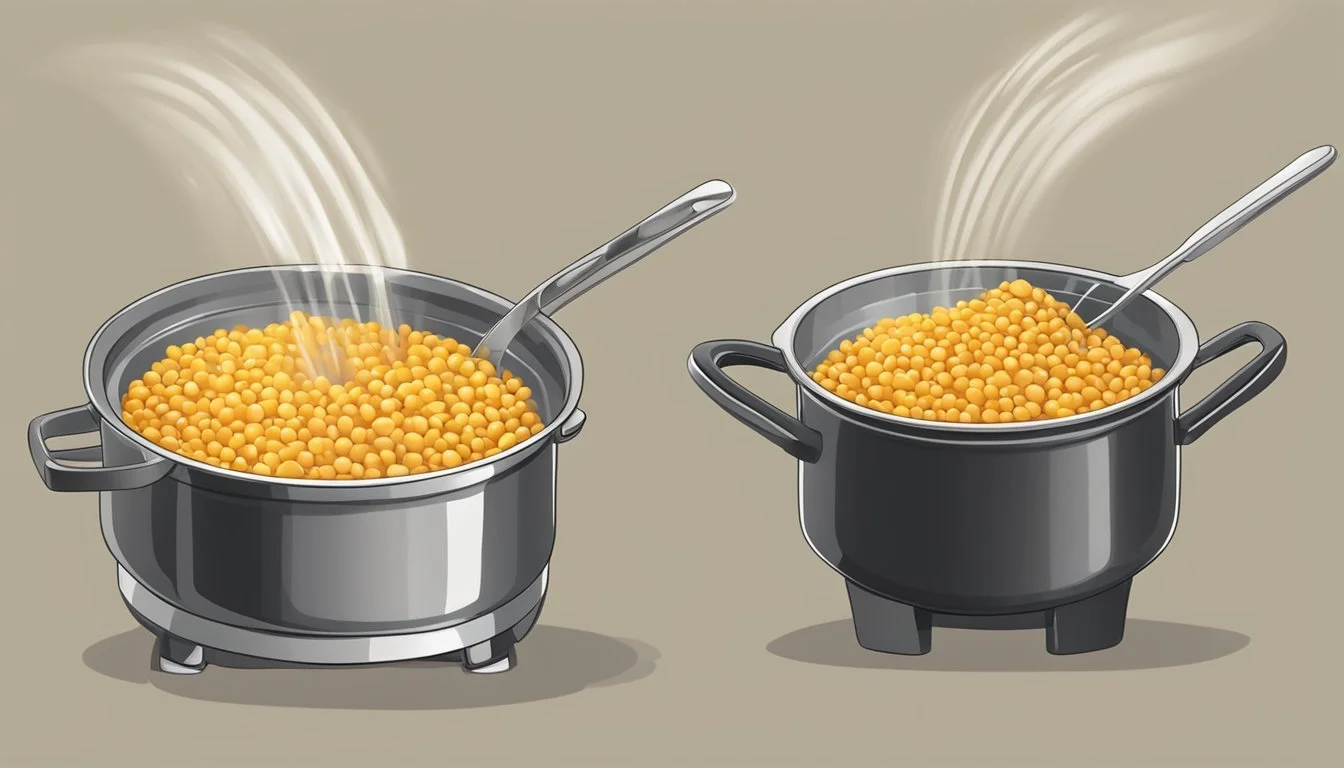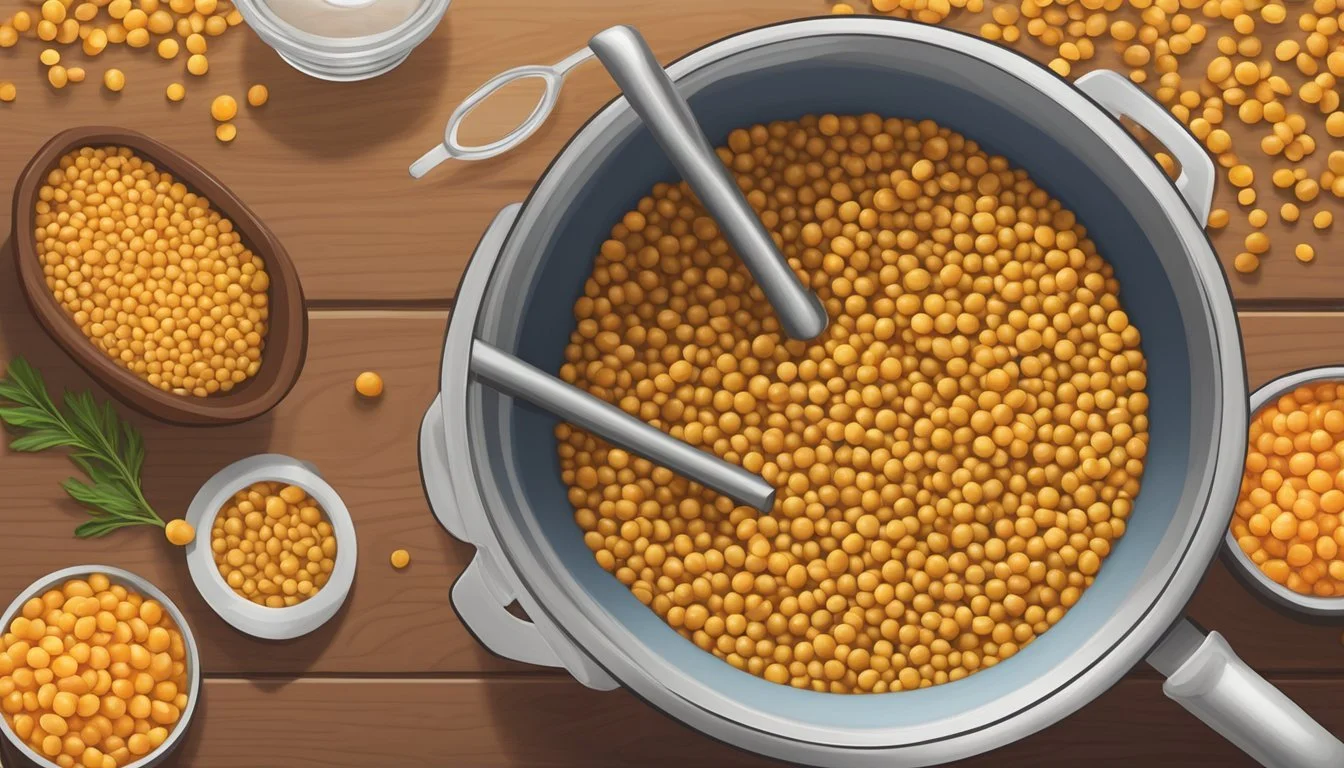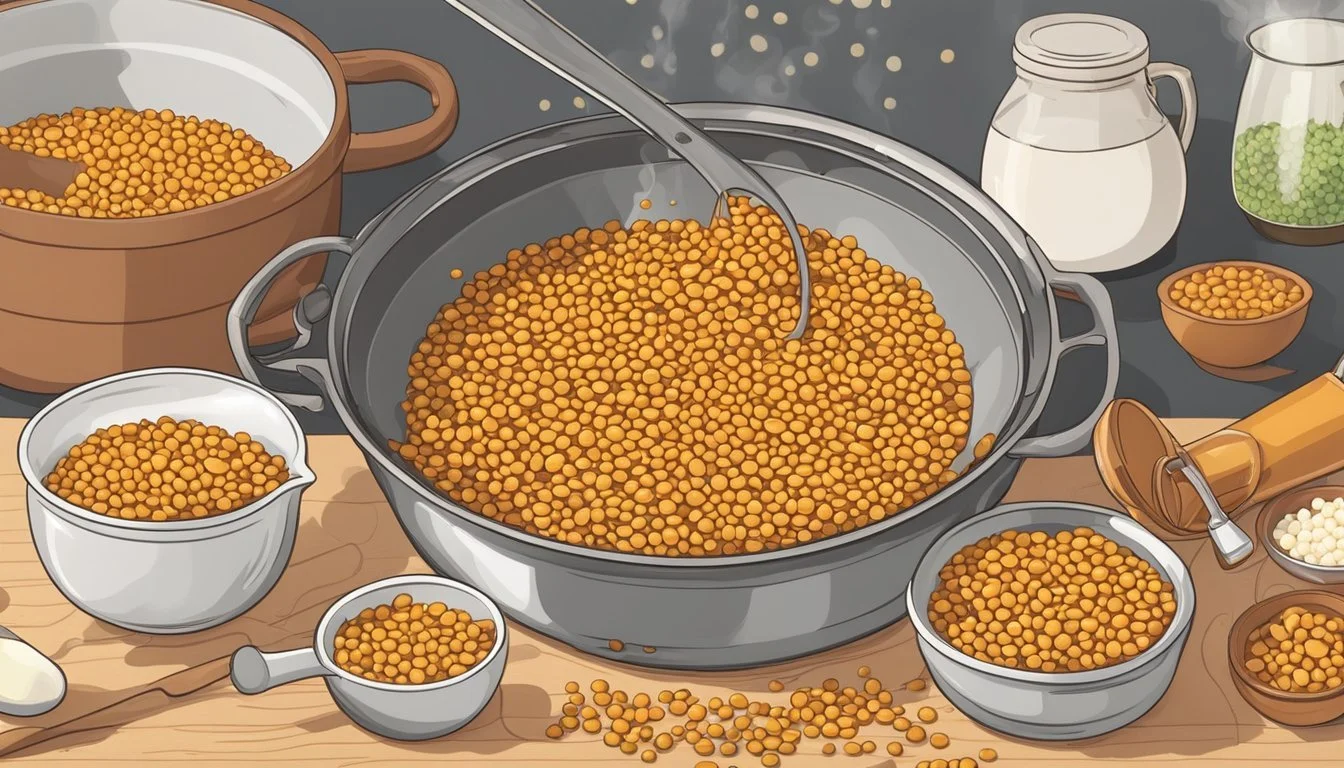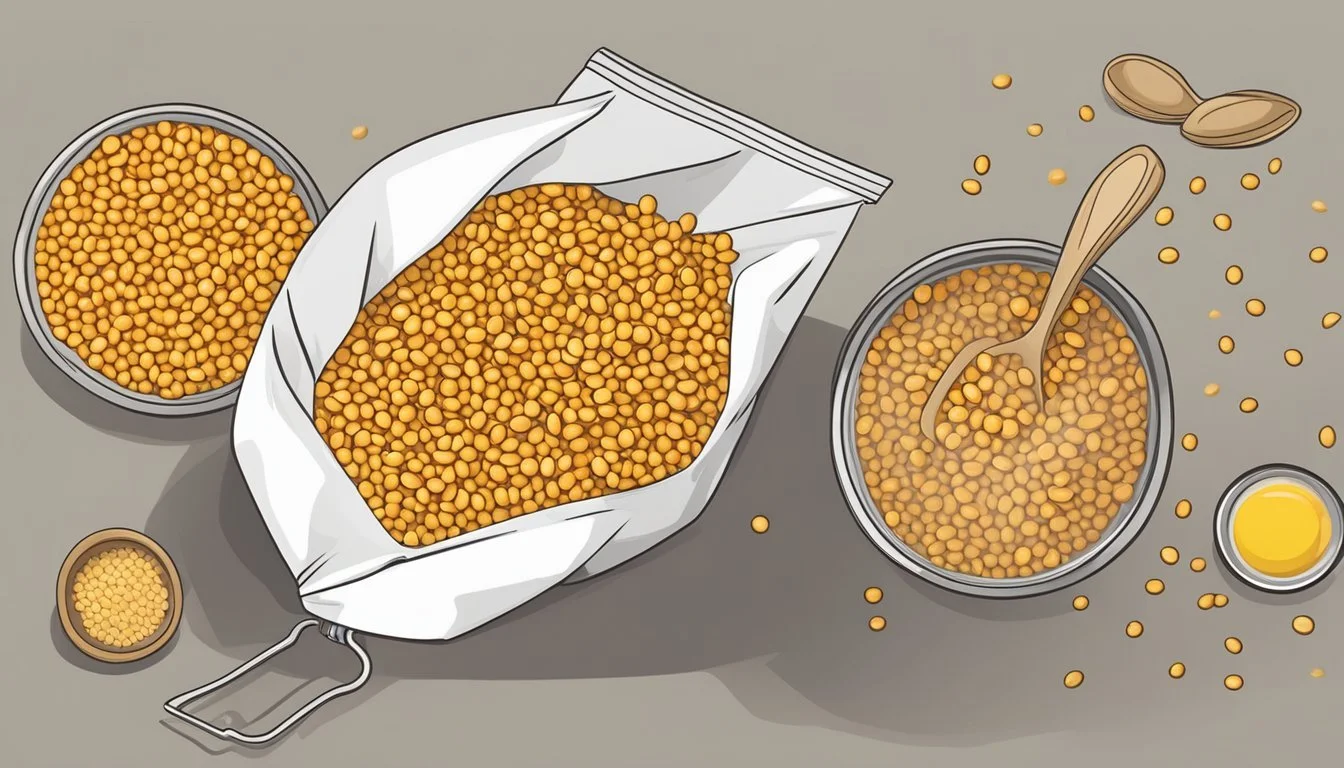How to Substitute Yellow Lentils for Red Lentils
A Simple Guide
When cooking a recipe that calls for red lentils, it's not uncommon to find oneself lacking the specific ingredient. In such cases, yellow lentils become a handy substitute, maintaining the integrity of the dish while adding a slightly different flavor and texture profile. Yellow lentils, like their red counterparts, are also hulled and split, which means they cook relatively quickly and are a suitable alternative in recipes where red lentils are meant to break down and thicken the dish.
Understanding the nuances of lentils is key to a successful substitution. While red lentils typically cook down to a soft texture ideal for thickening soups and sauces, yellow lentils hold their shape a bit better and offer a more robust bite. Although there is a slight difference in taste, with yellow lentils having an earthier flavor compared to the mild and slightly sweet profile of red lentils, the impact on most dishes is subtle and often desirable.
When substituting yellow lentils for red, it's important to consider cooking times. Yellow lentils generally take a few minutes longer to cook than red lentils. This means that adjustments in cooking time may be necessary to ensure the yellow lentils are tender and fully cooked. Although the substitution is straightforward, this slight variation in texture and cooking requirement should be kept in mind to achieve the desired outcome in the final dish.
Understanding Lentils
When considering lentil varieties, it's necessary to distinguish between the main categories, understand their nutritional profiles, and recognize their health benefits. Lentils, being an important part of vegetarian and vegan diets, provide a rich source of protein and several key minerals.
Categories of Lentils
Lentils are classified into various categories based on their color, size, and cooking times. Two common types are red lentils and yellow lentils, with both being hulled and split, which allows them to cook faster compared to their green or brown counterparts. Red lentils are known for their mild, sweet flavor and tend to become mushy when cooked, making them ideal for thickening dishes like soups and stews. Yellow lentils, while similar in texture, have a slightly earthier taste and hold their shape a bit better, providing a similar textural experience.
Nutrition and Health Benefits
Lentils are a powerhouse of nutrition, offering a myriad of health benefits. They are an excellent source of protein, important for muscle repair and growth, making them a key component of a plant-based diet.
Nutrient Amount per 1 cup (cooked) Calories 230 Protein 18g Fiber 15.6g Iron 6.6mg Potassium 731mg Magnesium 71mg
They are also rich in fiber, which can help improve digestive health and lower cholesterol levels. Lentils have a low sodium content, which is important for maintaining healthy blood pressure. The minerals, such as iron, potassium, and magnesium, support various bodily functions, including oxygen transport, muscle contractions, and nerve signals. Additionally, lentils are a great source of folate, a vital B vitamin necessary for DNA synthesis and repair, which makes them particularly beneficial for pregnant women and those with specific dietary needs. Importantly, lentils do not contain cholesterol, supporting heart health.
Cooking Essentials
When substituting yellow lentils for red lentils, it's important to consider factors such as cooking times and textural properties to achieve a comparable outcome in dishes.
Cooking Times for Different Lentils
Red lentils typically cook in about 15-20 minutes and are known for their tendency to break down and contribute to a creamy consistency in dishes. This makes them ideal for thickening soups and creating smooth dals.
Yellow lentils, which also cook relatively quickly due to being pre-split and lacking the skin found on other types, have a slightly longer cooking time than red lentils, averaging about 15-20 minutes to turn fully tender. However, like red lentils, they tend to disintegrate as they cook, lending a desirable thickness to dishes.
Lentil Type Cooking Time Consistency Achieved Red Lentils 15-20 min Creamy, mushy Yellow Lentils 15-20 min Soft, slightly less mushy
Textural Considerations
The texture of lentils is paramount in many recipes, influencing the overall mouthfeel of the final dish. Yellow lentils offer a similar texture to red lentils but maintain a slightly firmer bite after the same cooking time. While red lentils often become too mushy if overcooked, yellow lentils are more forgiving and retain their structural integrity a bit better, reducing the risk of ending up with an undesired mushy texture.
For a dish that requires a firmer texture with a bite to it, controlling the cooking time of yellow lentils is crucial; they should be checked frequently to achieve the preferred tenderness without letting them completely disintegrate.
Flavor Profile Comparisons
When substituting yellow lentils for red lentils, a chef must consider the subtle differences in taste and how seasonings can alter or complement these flavors.
Taste Differences Between Lentils
Red lentils have a mild, slightly sweet flavor profile and are known for their quick cooking time compared to other lentil varieties. They tend to break down and become mushy, which makes them ideal for thickening dishes like soups and daals. On the other hand, yellow lentils, while similar in taste, have an earthy note and retain their shape slightly better, providing a different texture. The transition from red to yellow lentils in a recipe should be seamless in terms of flavor, as they both contribute a naturally flavorful base without overpowering other ingredients.
Seasoning and Spice Adaptations
Since red and yellow lentils are similar in taste, they generally require no dramatic changes in seasoning. Nonetheless, chefs might consider a slight increase in the intensity of spices when using yellow lentils to complement their earthier tones. Spices like turmeric, cumin, and coriander, which are commonly used in lentil dishes, work well with both types. However, a precise match in flavor might necessitate minor adjustments:
Turmeric: Slightly increase to enhance the earthiness of yellow lentils.
Cumin: Keep consistent for both lentils to maintain the warmth in the dish.
Coriander: Adjust to personal taste; it pairs well with the nutty aspect of lentils.
Substituting Lentils in Recipes
When substituting yellow lentils for red lentils, it's crucial to consider the cooking properties and flavor profiles of each type. Yellow lentils can be a suitable replacement in terms of taste and texture, but one must adjust cooking times and expect subtle differences in the final dish.
Adapting Yellow Lentils for Red Lentil Recipes
Yellow lentils, while similar to red lentils, maintain their shape slightly better and may have a longer cooking time. In recipes where red lentils are meant to break down and thicken the dish, such as in lentil soups or purees, the chef may need to cook yellow lentils for a longer period to achieve a comparable consistency. It is important to taste the dish periodically and adjust the cooking time as needed.
For example:
Lentil Soup: If red lentils typically cook in 15 minutes, yellow lentils may require at least 20-25 minutes.
Salads: Red lentils often become too mushy for salads when overcooked. In contrast, yellow lentils will retain their firm texture, making them a better choice for this application.
Considerations for Recipe Types
When incorporating yellow lentils as a lentil substitute, one should think about the dish's desired outcome. Here are some considerations for various recipe types:
Soups and Stews: Yellow lentils work well as they offer a pleasing texture and thicken the broth nicely when cooked.
Purees: Extra cooking and blending might be required to achieve the smooth consistency that red lentils naturally provide.
Salads: Yellow lentils are often preferred as they hold their shape and add a pleasant bite.
Recipe Type Red Lentils Yellow Lentils Soups Thicken quickly Require longer cooking time Purees Naturally smooth May need extra blending Salads Can become mushy Stay firm and are preferred
It is always a good practice to add yellow lentils earlier in the cooking process than one would with red lentils. This ensures that they have ample time to soften and impart their flavor to the dish.
Practical Tips for Substitution
When substituting yellow lentils for red lentils, one must consider variations in cooking times and textures. Yellow lentils are a bit firmer and may not break down as readily as red lentils, affecting the final dish's consistency.
Adjustments in Cooking Methods
Yellow lentils generally require a longer cooking time than red lentils due to their firmer texture. Where red lentils often cook down to a soft texture that is ideal for thickening dishes like soups and stews, yellow lentils retain their shape better, leading to a different mouthfeel. It's crucial to adjust cooking times as follows:
For soups and stews: Increase cooking time by approximately 5-10 minutes to achieve a comparable tenderness.
For purees or when a smoother consistency is desired: Cook the yellow lentils until they are very tender, which may require an additional 15-20 minutes of cooking, then blend to the desired consistency.
Proportions and Measurements
Substituting yellow lentils for red lentils can be done on a 1:1 basis; however, because of their different water absorption rates, slight adjustments to the liquid amount might be necessary. When making the substitution, one should start with the same liquid measurements as the recipe calls for with red lentils and monitor the dish as it cooks. If the mixture appears too dry, they can add more liquid in small increments. Here's a simple guideline:
Red Lentils Measurement Additional Liquid for Yellow Lentils 1 cup Start with 1/4 cup extra, adjust as needed 2 cups Start with 1/2 cup extra, adjust as needed
By considering these adjustments, cooks can successfully incorporate yellow lentils into recipes that originally call for red lentils, without significantly altering the dish's intended flavor and texture profile.
Additional Considerations
When incorporating yellow lentils as a substitute for red lentils, it is essential to consider factors such as cost and availability, as well as how this substitution may affect culinary applications beyond mere replacement.
Cost and Availability
Yellow lentils are generally affordable and widely available in most parts of the world, similar to red lentils. However, prices can vary depending on the region and the source. In terms of availability, yellow lentils are commonly found in Indian cuisine, where they're a staple ingredient, and can also be sourced from stores that specialize in Mediterranean cuisine. A shopper may find that in some areas, yellow lentils might be more prevalent and potentially less expensive due to regional preferences.
Culinary Applications Beyond Substitution
While yellow lentils can replace red lentils in recipes, chefs should note the differences in flavor and cooking times that may affect the dish's outcome. Yellow lentils often have a slightly earthier taste compared to the mild, sweet flavor of red lentils. They are versatile in various dishes, from Indian dals to Mediterranean soups. It's important for a cook to consider if the slightly different flavor profile of yellow lentils will complement the other ingredients in their dish.







